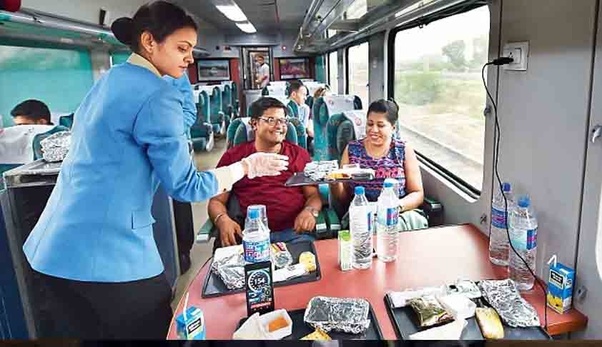The evolution of train food delivery reflects a journey from basic provisions to a sophisticated dining experience onboard. Initially, passengers relied on manual service or purchased food from station vendors, providing basic sustenance for their journeys. However, as train travel became more prevalent and diverse, so did the options for onboard dining. The introduction of dining cars brought a touch of elegance, allowing passengers to enjoy freshly prepared meals while traversing long distances.
With the advent of technology, train food delivery underwent a significant transformation. Pre-packaged meals and outsourcing catering services improved convenience and expanded menu options. Online ordering platforms revolutionized the experience, empowering passengers to select and customize their meals prior to departure. Moreover, the integration of delivery services to seats enhanced comfort and accessibility, catering to the evolving needs of modern travelers.
In recent years, there has been a notable shift towards quality, sustainability, and dietary inclusivity in train food delivery. Operators have responded to consumer demands by offering healthier, locally sourced options and accommodating various dietary preferences. This emphasis on quality and sustainability not only enhances the dining experience but also aligns with broader societal trends towards mindful consumption and environmental stewardship.
The landscape of dining during train journeys has undergone a significant transformation with the introduction of food delivery services. This article delves into the evolution of such services, their advantages, operational mechanisms, popular providers, ordering tips, hurdles, and future prospects.
Evolution of Train Food Delivery Services:
Traditionally, train travelers had limited culinary choices, relying on pantry cars or station vendors. However, the emergence of technology and shifting consumer demands has given rise to specialized railway food order for train passengers. These services are geared towards providing restaurant-grade meals directly to passengers’ seats.
Advantages of Food Delivery in Trains:
Convenience: Foremost among the benefits is the sheer convenience it offers. Passengers are no longer tethered to onboard catering limitations or constrained by station stopovers for meals. Instead, they can effortlessly place orders via mobile apps or websites and have their desired dishes brought directly to their compartments.
Variety: Train food delivery services boast an array of cuisines and dishes, catering to diverse palates. Whether passengers hanker for local specialties or international fare, an extensive menu ensures a gratifying gastronomic experience throughout their journey.
Quality and Hygiene: Paramount to these services is the assurance of quality and hygiene. Esteemed providers prioritize the freshness of ingredients, strict adherence to food safety protocols, and meticulous packaging to uphold the meals’ integrity during transit. This commitment to quality instills confidence in passengers regarding the safety of their onboard dining experience.
FAQs
Availability: While not ubiquitous, many long-distance and premium trains extend food delivery services to passengers.
Timely Delivery: To ensure prompt delivery, it’s advisable to place orders well in advance, accounting for potential delays.
Dietary Options: Most providers accommodate dietary restrictions, offering vegetarian, vegan, and other specialized menu items.
Order Modification: Depending on the provider, passengers may have a window to cancel or amend orders post-placement.
Food Safety: Reputable services prioritize hygiene and quality, guaranteeing the safety of consumed meals.
Conclusion
The advent of food delivery in train has revolutionized the dining experience for travelers, offering unparalleled convenience, diverse culinary options, and uncompromising quality during their journeys. As technology continues to advance and passenger preferences evolve, we can anticipate further refinements in service offerings, elevating the allure of train travel for passengers.
